- Home
- Orhan Pamuk
The Museum of Innocence Page 61
The Museum of Innocence Read online
Page 61
I did not remain for long in Istanbul. Following Çetin’s directions, I drove to the garage owned by Şevket Usta, who specialized in Chevrolets, in the streets behind Maslak; in the empty lot behind the garage one look at our ’56 Chevrolet under a fig tree produced a paroxysm of emotional turmoil. The trunk was open, with chickens from the adjacent coop wandering through the wreck, and around it children were playing. According to Şevket Usta, some parts had been salvageable, among them the gas cap, the gearbox, and the handle of the rear window, all sold to owners of other ’56 Chevrolets, a sizable market as most of the city’s taxis were now the same model. When I poked my head into the wreck, to peer at where the fuel gauge and the speedometer had once lodged in mint condition, and the radio knobs, and the steering wheel, I caught the scent of leather rising from the seat coverings in the gentle heat of the sun, and my head began to swim. By instinct, I touched the steering wheel, which seemed almost as old as I was. And soon the intensity of the memories compressed into these remains overwhelmed me and I broke down.
“Kemal Bey, what happened? Why don’t you sit down over there,” said Çetin, his voice full of understanding. “Children, could you bring us a glass of water?”
For the first time since Füsun’s death, I’d been on the brink of crying in public. A boy apprentice, sooty as a coal digger and covered in axle grease, but with immaculately clean hands, brought us tea on a tray with the logo cyprus turk (I record this by force of habit; visitors should not waste time looking for it in the Museum of Innocence); as we drank our teas, after a bit of bargaining, we bought back my father’s car.
“So where are we going to put this, Kemal Bey?” asked Çetin Efendi.
“I want to spend the rest of my life under the same roof with this car,” I said with a smile, but Çetin Efendi understood at once that I was earnest, and unlike the others, he did not say, “Oh, please, Kemal Bey, life must go on—you can’t die with the dead.” Had he done so, I would have explained that the Museum of Innocence was to be a place where one could live with the dead. Though I had prepared this answer in advance, the words now stuck in my throat: Prompted by pride, I said something altogether different.
“There are lots of things stored in the Merhamet Apartments. I want to bring them together under one roof and spend the rest of my days among them.”
I had many heroes in mind, who, during the last years of their lives, like Gustave Moreau, had arranged for their homes to be turned into museums posthumously. I loved the museums they’d created, and so I continued my travels, revisiting the hundreds I’d come to know and cherish and going to the thousands of others I still longed to see.
82
Collectors
THIS IS what I observed while traveling the world, and wandering through Istanbul. There are two types of collectors:
The Proud Ones, those pleased to show their collections to the world (they predominate in the West).
The Bashful Ones, who hide away all they have accumulated (an unmodern disposition).
The Proud regard a museum as a natural ultimate destination for their collections. They maintain that whatever a collection’s original purpose, it is, in the end, an enterprise intended for proud display in a museum. This view was common in the official histories of small, private American museums: For example, the brochure for the Museum of Beverage Containers and Advertising describes how the collector Tom picked up his first soda can on the way home from school. Then he picked up another, and a third, keeping what he found until after a time his ambition was to “collect them all” and exhibit them in a museum.
But the Bashful collect purely for the sake of collecting. Like the Proud, they begin—as readers will have noticed in my own case—in pursuit of an answer, a consolation, even a palliative for a pain, a resolution of difficulty, or simply out of a dark compulsion. But living in societies where collecting is not a reputable act that contributes to learning or knowledge, the Bashful regard their compulsion as an embarrassment that must be hidden. Because in the lands of the Bashful, collections point not to a bit of useful information but rather to a wound the bashful collector bears.
I would come upon these dark sentiments in many places over the years, but it was in the early months of 1992, among those in Istanbul who specialized in film paraphernalia, that I caught my first glimpses of “collectors’ embarrassment,” while hunting for posters, lobby photographs, and ticket stubs from films we’d seen in the summer of 1976, to display in the Museum of Innocence.
It was after having haggled at length that Hıfzı Bey sold me an assortment of lobby photographs from films like Love’s Agony Ends in Death and Caught in the Crossfire, and after he had told me again and again how pleased he was by my interest in his collection, he turned wistful.
“It saddens me, Kemal Bey, to part with things that are so dear to me,” he said. “But how I wish that the people who mock my hobby, and make fun of me—the ones who ask, ‘Why do you cram the house with this filth?’—how I wish they could see someone like you, a cultured man from a good family, finding something to value in my collection. I don’t drink, or smoke, or gamble, or fool around with women. My only vice is collecting photographs of stars and films…. Mght you be interested in stills from scenes on the Kalender in Hear My Mother’s Lament, in which Papatya played when still a young girl? She’s wearing a pinafore, and her shoulders are bare…. If you would care to come to my humble abode this evening, I could show you photographs taken during the filming of Black Palace, which was never completed, due to the suicide of its lead, Tahir Tan. Until now, no one but me has seen them. I also have pictures of Inge, the German model who appeared in the advertising campaign for Turkey’s first domestic fruit-flavored soda—she went on to play a kindly, Turk-loving German aunt in Central Station, which was part of the first wave of Turkish-German film productions. I have lobby photographs of her with the man she falls in love with in the film; he is played by Ekrem Güçlü, and they are kissing on the lips.”
When I asked about other lobby photographs I was seeking, Hıfzı Bey told me that there were quite a few collectors whose homes were packed to the rafters with photographs, films, and posters. When their rooms were so full of photographs, posters, newspaper cuttings, and magazines that no room remained to live in, their families would abandon the house (most had never married anyway), and the collectors would be free to begin to pick up everything they could get their hands on, until their houses turned into such rubbish dumps that no one could even enter them. Doubtless some of these famous collectors would have what I was after, but they would never be able to extract the items from the heaps that were their homes—it was hard enough for them to get through the front door.
Even so Hıfzı Bey proved helpless in the face of my entreaties, and he was able to get me into some of the rubbish dens that had become legendary among the Istanbullus during the 1990s.
Sifting through the detritus in these houses I was able to find most of the lobby photographs that I would go on to display in my museum, along with the Istanbul views, quite a few postcards, cinema tickets, restaurant menus that it had not occurred to me to save at the time, rusty old tin cans, pages from yellowed newspapers, paper bags with company logos, medicine boxes, bottles, photographs of film stars and other celebrities, and also pictures of ordinary, everyday Istanbullus that spoke more eloquently than anything of the place where Füsun and I had once lived.
The owner of an old two-story house in Tarlabaşı looked relatively normal, but sitting on a plastic chair surrounded by piles of paper and odd objects, he declared with a reticent pride that he had amassed 42,742 items.
I felt the same shame while inspecting the holdings of a retired meter reader, having only just managed to enter the house in which he and his bedridden mother lived in a room heated by a gas stove. (The rest of the place was as frigid as it was inaccessible, though at some remove I glimpsed old lamps, Vim cans, and a few toys familiar from childhood.) What made me feel ashamed was not th
e retired meter reader’s mother, who berated and humiliated her son incessantly: It was knowing that all these things, saturated with memories of people who had once walked the streets of Istanbul, and lived in its houses, and were now mostly dead, would eventually disappear without ever having been brought together in a museum, or sorted, or set within a frame. I had recently heard the drama of the Greek photographer who had, for forty years, been taking pictures at weddings, engagement parties, business meetings, and restaurants in Beyoğlu; having run out of space, and knowing his pictures were no longer wanted, he set about burning his entire stock of negatives in an apartment furnace. There was simply no demand for these photographs and negatives recording the weddings, festivities, and other gatherings of an entire city, not even free of charge. The owners of the rubbish dens would be objects of ridicule in apartment houses and neighborhoods, feared as much for their being solitary cranks as for combing trash bins and consorting with junk dealers. Hıfzı Bey had already told me, without undue bitterness, in a tone more suggestive of one imparting life’s verities, that after these solitaries died, their piles of accumulated objects would, with a quasi-religious ferocity, be consigned to an empty neighborhood lot (where lambs were sacrificed on holidays)—to be burned or left for the junk man or the rubbish collector.
In December 1996 a lone hoarder (“collector” would be the wrong word) named Necdet Adsız, who lived in Tophane, a mere seven-minute walk from the Keskins’ house, was crushed to death beneath the accumulated piles of paper and old objects in his little house, not to be discovered, let alone mourned, until four months later, when in summer the stench coming from the house grew unbearable. With the piles pressing up against the front door, the firemen were obliged to enter through the windows. By describing the incident in half-mocking, half-scaremongering terms, the papers sowed among the people of Istanbul even more apprehension than already existed concerning all manner of collectors. There is a further strange detail that I hope the reader will not find superfluous, and that comes to me owing to my ability in those days to think about all things connected to Füsun at the same time. Necdet Adsız, the man crushed to death beneath his hoard, whose body was left to rot, was the same Necdet whom Füsun had mentioned at the end of the engagement party at the Hilton, when the subject of séances came up—the friend she’d assumed to be dead.
That their life’s work was an embarrassment to be kept secret and hidden, and that beneath it they felt a shame with even deeper roots, I saw in the eyes of my fellow collectors, whom I would like to thank here for their contributions to my museum and to Füsun’s memory. I have already mentioned Halit Bey the Invalid, the celebrated postcard collector, whom I sought out between 1995 and 1999, fired by the ambition to acquire postcards of every street and neighborhood I had ever visited with Füsun. There is another (with no wish to be named) whose collection of doorknobs and keys I was delighted to exhibit after he explained that every resident (by which he meant every male) of Istanbul touched about twenty thousand door handles in his lifetime, and so it was virtually certain that “the hand of the one I loved” had touched a great many of his specimens. Then there is Siyami Bey, who spent the last thirty years of his life collecting photographs of every ship to pass through the Bosphorus since the invention of photography, and who was kind enough to give me copies of those photographs for which he had doubles. I would like to acknowledge him here, first for providing the means to show my visitors the ships whose whistles I heard while thinking of Füsun, or walking through the city with her, and second for being, like a Westerner, free of shame about exhibiting his collection.
It was from another collector who, more typically, preferred anonymity, that I acquired the assortment of little paper portraits of the dead that mourners would pin to their collars at funerals between 1975 and 1980: After driving a hard bargain for each and every one of them, he asked the essential question I so often heard from these types, often in a demeaning tone, to which I recited my usual answer.
“I’m setting up a museum, you see….”
“I’m not asking what you’re going to do with them. What I’m asking is, why do you want these things?”
He was giving expression to the understanding that anyone obsessed with collecting objects and storing them away must be in the grip of heartbreak, deep distress, or some ineffable psychological wound. So what was my problem? Was I troubled at the loss of someone dear whose picture I had been unable to pin to my collar at the funeral? Or was I, like the man asking the question, suffering from something deep, unmentionable, and shameful?
As personal museums were almost nonexistent in the 1990s, the collectors of Istanbul were secretly contemptuous of themselves and of their obsessions, and no less so of one another, whom they excoriated openly, the tirades only worsening if complicated by jealousy. When Aunt Nesibe had moved to Nişantaşı and the architect İhsan began work on the Keskin house, aiming to turn it into a real museum, it was bruited about scornfully that I was “making a private museum, just as in Europe!” and in the same breath that I was rich. My hope was that this might soften their disdain and let them see not someone driven by a deep unspoken psychological wound—not half cracked, in other words, as they were—but someone collecting things for a museum as one might in the West, simply on account of being rich and inclined to celebrate his collection.
At the insistence of Hıfzı Bey, and in the hope of chancing upon a few reminders of Füsun that might have a place in my story, I attended a meeting of the Lovers of Collectible Objects Association, the first such group in Turkey, then recently established. There, in a little wedding salon rented for the morning, I felt myself a leper among society’s lepers.
There were those familiar to me by name as collectors (including seven already known to the reader, such as Cold Suphi, the matchbox collector), and they treated me even more shabbily than they might have done a regular Istanbul collector or one of their own. The mostly silent stares of suspicion, as if I were a spy, an interloper, broke my heart. Hıfzı Bey’s subsequent and apologetic explanation suggested that to see even a rich man driven to soothe his troubled heart by acquiring objects awoke in them feelings of revulsion and hopelessness. For they were simple folk, so innocent as to imagine that their sin, their mania for collecting things, was an illness that wealth would surely have cured. But in time, as the gossip about my love for Füsun became common knowledge, these first serious collectors of Istanbul not only helped me but also shared their stories of struggle to emerge from underground and bring the fruits of their labors into the public domain.
Before transporting to Çukurcuma one by one the objects I’d stored at the Merhamet Apartments, I took a panoramic photograph of the collection that now filled most of the room where Füsun and I had made love twenty years earlier. (By now, too, the cries of children playing football in the back garden had been supplanted by the roar of an air conditioner.) When I brought these things together with the objects already assembled in the Çukurcuma museum house—those I had found during my travels, the Keskins’ old possessions, the things I had extracted from the rubbish dens, and from members of the Association, as well as those received from various witnesses of my story—a thought that had occurred to me during my travels abroad, especially my visits to flea markets, took form before me, vivid as a painting.

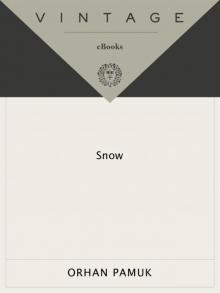 Snow
Snow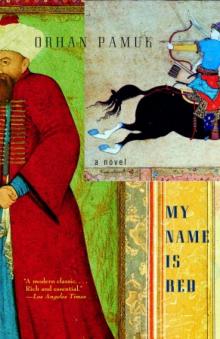 My Name is Red
My Name is Red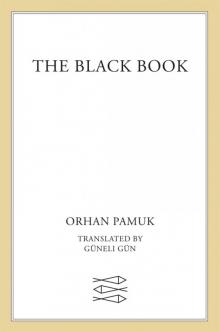 The Black Book
The Black Book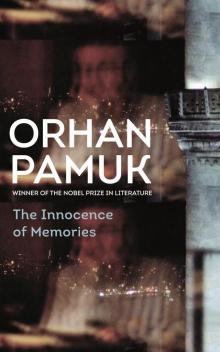 The Innocence of Memories
The Innocence of Memories The White Castle
The White Castle Other Colors
Other Colors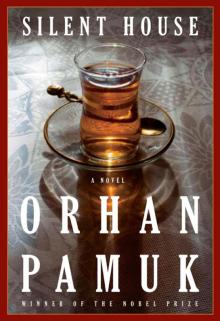 Silent House
Silent House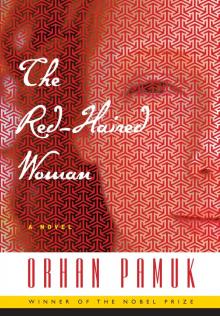 The Red-Haired Woman
The Red-Haired Woman The Museum of Innocence
The Museum of Innocence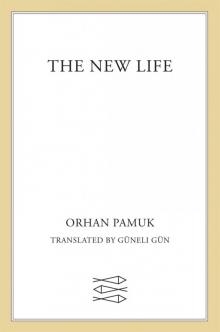 The New Life
The New Life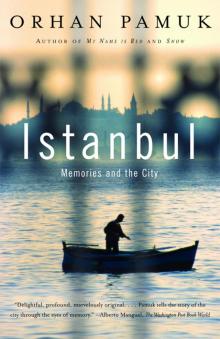 Istanbul
Istanbul